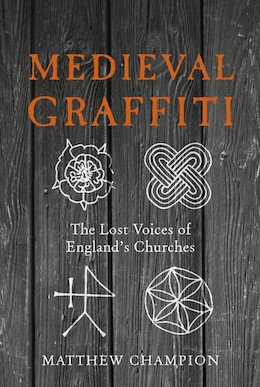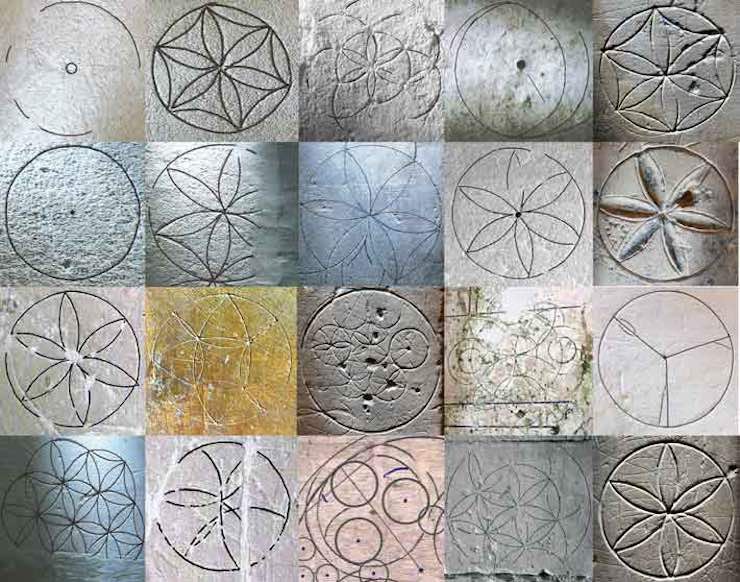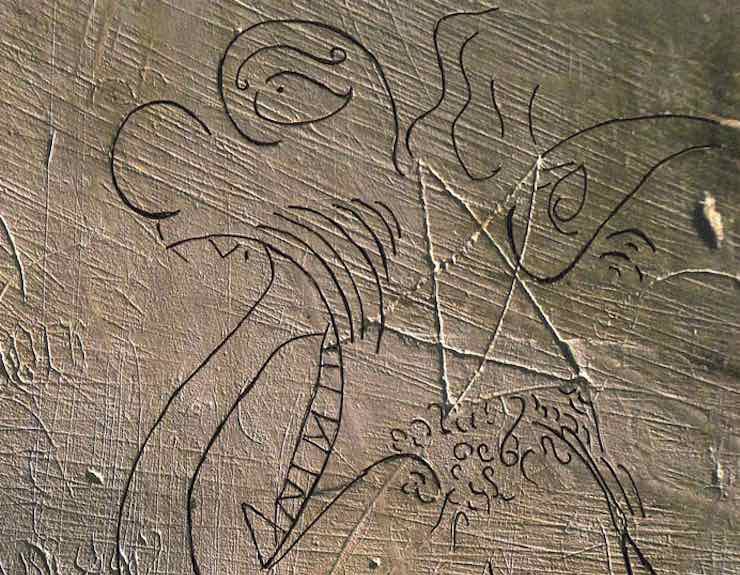The more we learn about medieval graffiti, the clearer we can envision the daily lives of people from centuries ago: students scribbling irreverent doodles in the margins of illuminated manuscripts, scribes bemoaning the effects of too much ale on similarly ancient pages. It may not surprise you to learn that manuscripts weren’t the only places people left hints of their daily hopes and woes—churches bore similar signs, ranging from daisy wheels to crosses to “witch marks.” The latter is especially interesting because it was a type of ritual protection that today we would more associate with pagan practices than with Christianity.
 These witch marks are among the various forms of graffiti that archaeologist Matthew Champion uncovered and studied for his book Medieval Graffiti: The Lost Voices of England’s Churches. He writes, “[T]he medieval church was a far more interactive space than we may have once believed,” pointing to the collections of charms, curses, prayers, word puzzles, and drawings of ships, demons, and knights battling dragons. Moreover, the hands that etched these messages belonged to a variety of people associated with the church: those who physically built it to a lord from a nearby manor to the parish priest himself.
These witch marks are among the various forms of graffiti that archaeologist Matthew Champion uncovered and studied for his book Medieval Graffiti: The Lost Voices of England’s Churches. He writes, “[T]he medieval church was a far more interactive space than we may have once believed,” pointing to the collections of charms, curses, prayers, word puzzles, and drawings of ships, demons, and knights battling dragons. Moreover, the hands that etched these messages belonged to a variety of people associated with the church: those who physically built it to a lord from a nearby manor to the parish priest himself.
Champion also found more than one pentangle (or, as we know it, a pentagram). A recent piece on Hyperallergic points out that magic was more intertwined with Christianity than we might have thought, in the form of deeply-held folk beliefs and traditions. Champion explains that “these symbols represent a level of folk belief that permeated the whole of medieval society, an aspect of religious belief that, taken in context, was as central to the everyday lives of the medieval commoner as the next meal, the next harvest and the next year.”
For instance, take these floral designs, which were often found on and around baptismal fonts:

“Christianity was not the warm and fluffy religion that it is today,” Champion told Archaeology.org. “People believed in the power of evil, and would do everything they could to ward off the ill forces that lurked outside the church door.” Such as drawing these intricate designs intended to trap evil spirits within their interlocking circles and shapes.
Imagine that—medieval parishioners carving symbols into the walls of their churches as a form of protection and an expression of faith.










